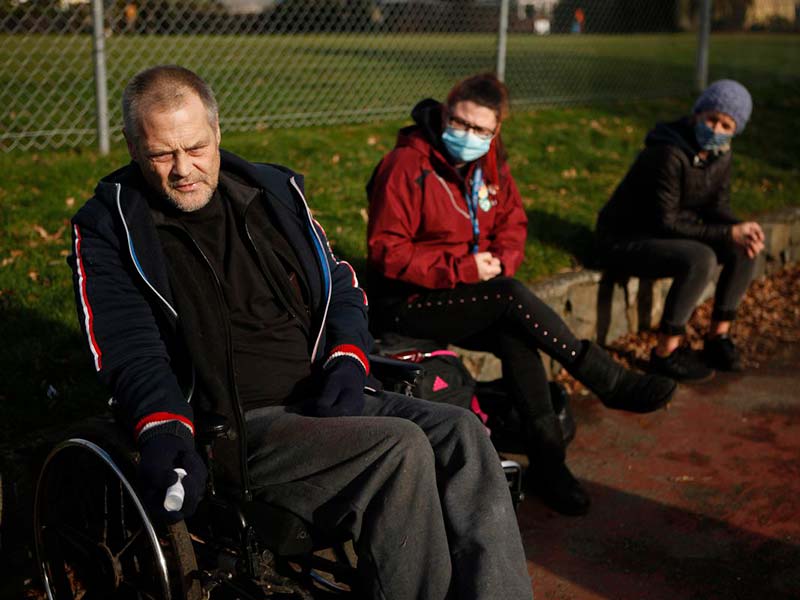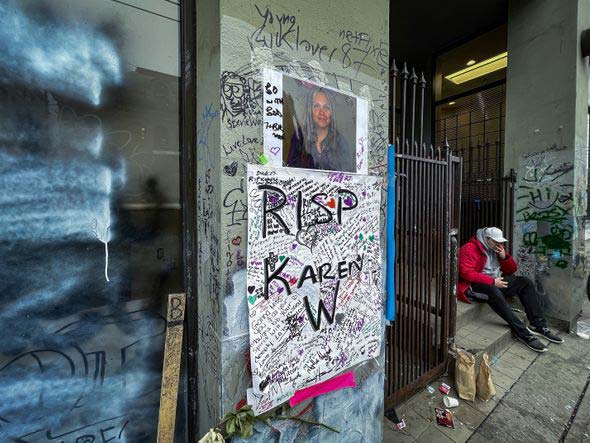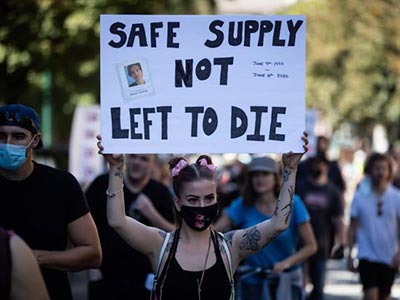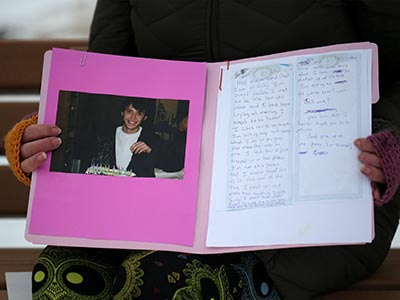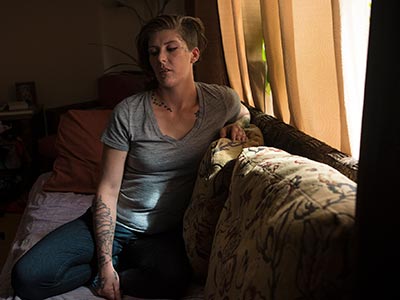Early in the morning on Feb. 15, 2020, Brad and Debbie Dalke received a phone call. After several successful attempts to overcome his opioid addiction over the years, their son Brady had once more relapsed, this time with tragic consequences. He had succumbed to a lethal dose of fentanyl.
Brady was 25 years old.
“Brady was a person who had deeper hurt inside him that he just didn’t know how to cope with.
“And he didn’t know how to bring it out and learn how to deal with it.
“And we didn’t have enough time and enough resources to get there.”
Brady used opioids in large part to cope with his severe anxiety. The all-consuming dependency eventually robbed the Kamloops, B.C., family of the energetic, athletic young boy they once had. Brady tried counselling and treatment programs, making great progress until that morning after Valentine’s Day.
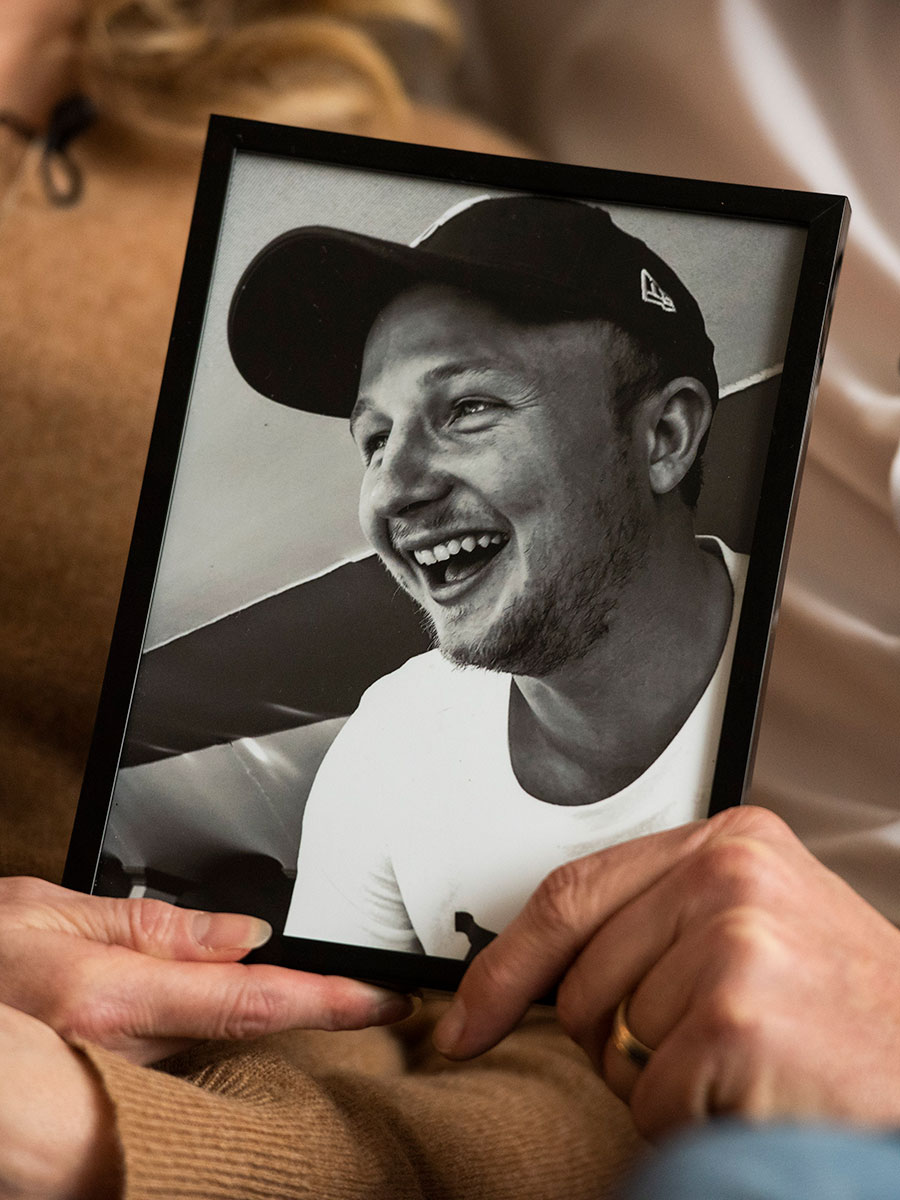
Relapse is common in recovery. But today’s illicit drug supply, awash with fentanyl and other toxic substances, is unforgiving.
Brady was one of more than 2,670 people to die of apparent opioid toxicity in the first half of 2020, according to national numbers from the Public Health Agency of Canada.
A count of more recent data by province and territory, where available, shows at least 2,563 more deaths over the course of the year.
This incomplete total, still missing months’ worth of data, puts the national count at 5,233 – already making 2020 the deadliest year on record for opioid-related deaths since national surveillance began in 2016.
The individuals behind these numbers are a lot more varied than you might think. Here are the stories of 100 people who died last year — they represent just a fraction of the toll of Canada’s overdose crisis.
Dulling the pain
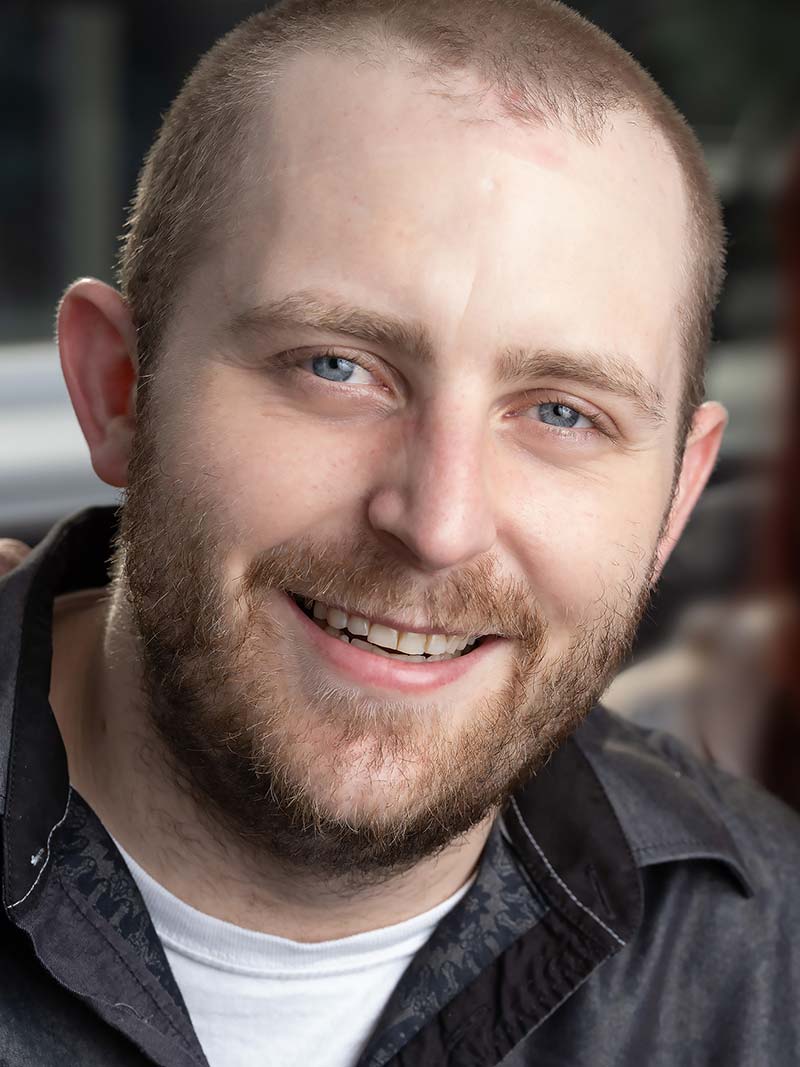
Harley Cartwright, 31, was prescribed OxyContin more than a decade ago after a car crash that left him with multiple serious injuries, including two broken femurs. When doctors cut him off, he turned to illicit opioids – a common pathway into problematic substance use, according to addiction experts.
Harley’s mother, Vicki Cartwright, said he had tried desperately to stop using drugs, especially in his last few years. He was on methadone for a while, but stopped when it gave him stomach issues. He was turned away from several detox and addiction-treatment facilities, either because they were full or he didn’t meet the criteria. Two months into one residential treatment program, staff discovered Harley had brought a mobile phone in, in violation of the rules, and told him he would have to either start the program over or leave. He chose to leave.
Two weeks before his death, Harley was admitted to hospital with excruciating stomach pains and nausea. They later learned he had a hiatal hernia, and had brought a small amount of illicit opioids into the hospital to deal with the pain.
“He had really wanted to get help the last couple of years … but was slowly giving up hope,” Ms. Cartwright said. “He started being his own doctor and was trying to detox at the end by himself, as the system was failing him.”

Danielle Blazik, 38, was a mother of two young boys who loved to play catch with them by the water. She helped out at the Food Bank from a young age and worked with at-risk youth. Her trouble with drugs started when doctors prescribed her opioids for the pain she suffered after a car accident. An abusive relationship worsened her condition.

Despite suffering a back injury that left him walking with a limp, Ethan Chiefmoon, 22, stood tall and proud. He was witty, optimistic and enthusiastic about life, and had a repertoire of jokes that would make even the grouchiest people crack a smile. Ethan possessed a warm energy and despite always being surrounded by people who cared for him, he passed away alone. His friends will remember him for his ability to make them laugh.
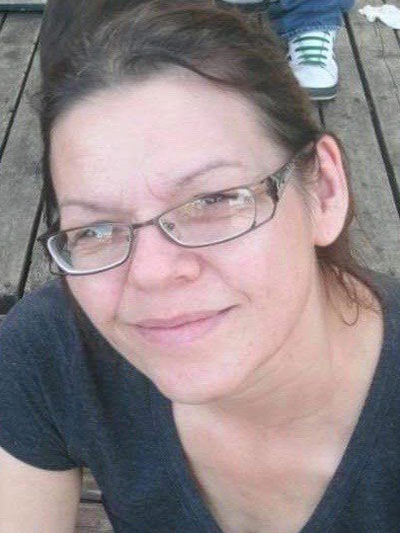
Josephine Mavis Isaac, 54, was known to belt out songs at the top of her lungs and brag to anyone who would listen about her children and grandchildren, who brought her the most joy in life. She struggled with alcohol addiction her entire life and began using the medication hydromorphone in 2017 after breaking her arm, which turned into an opioid addiction. She died of a fentanyl overdose in June.

A kind, six-foot-four basketball-loving giant with a brilliant smile, Erik Larsson, 32, called his mother every day to tell her he loved her. He became dependent on pain pills after injuring his leg in a fall.
The toll of mental illness

Douglas Spencer Campbell, 42, was always the hit at family gatherings, especially with the younger cousins he would tussle with. He was skilled at many things, but was weighed down by a deep sense of insecurity. Doug lived with bipolar disorder, but chose not to take medication because he said it made him sick. His father wonders if it was because he didn't want to admit to himself that he had what he saw as a fault.
Bipolar disorder is characterized by extreme shifts in mood and energy levels, as well as periods of wellness. Symptoms of depression can include overwhelming feelings of hopelessness, sadness and withdrawal from others, while symptoms of mania can include an excessively elevated mood, racing thoughts and impulsivity. Research has consistently shown that people with bipolar disorder have a high rate of co-occuring substance use disorder. About 1 per cent of Canadians will experience bipolar disorder in their lifetimes, according to the Canadian Mental Health Association.
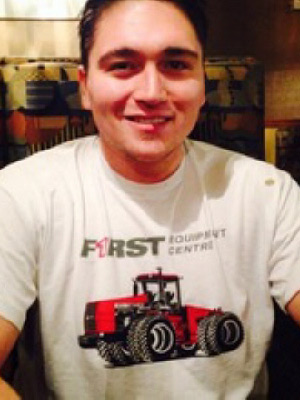
Joseph Edwin Auger, 33, or Joey, as everyone knew him, worked in the oil fields as a young man and enjoyed hockey, skateboarding and BMX trick-riding in his down time. He was diagnosed with schizophrenia and developed a substance-use disorder as an adolescent. He died three days before Christmas.
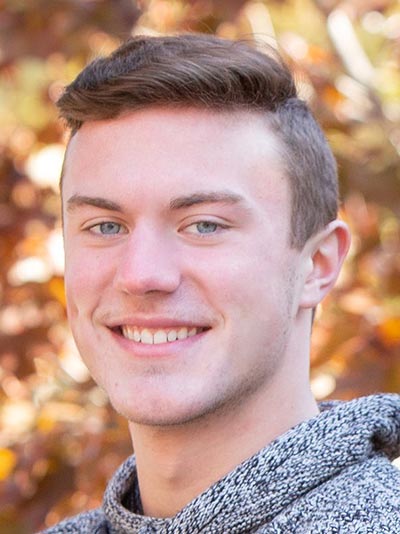
Matthew Baraniuk, 20, was a former University of Saskatchewan Huskies football player. He struggled to find ways to cope with his ADHD, and died while trying to self-medicate. His family would like to see better supports for young people experiencing mental health challenges.
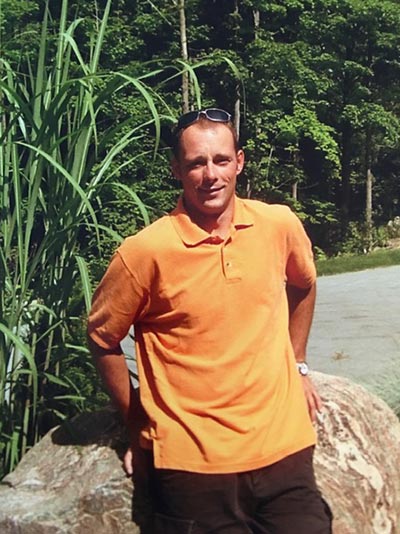
Jason Bourgeois, 43, struggled with mental-health issues since his late teens and felt no one could help him, despite the efforts of doctors and mental-health professionals. He had low self-esteem, but wanted nothing more than to help others and make everyone proud of him. The births of his daughter and son changed him for the better. When Jason relapsed, he entered rehab. He was working on his recovery when the COVID-19 pandemic hit and he was unable to see his family for months – something that affected him deeply.

Leif Daniel Bridgman, 38, grew up fixated on music and movies. When he was 8 or 9, he would gather his friends to videotape recreations of movies such as The Terminator and Star Wars. "The results were surprisingly complex and entertaining," said his stepmom, Mary Ann McKenzie. Leif grew up to work as an actor and background performer in many productions, including Supernatural, X-Men, Falling Skies, The Flash and Twilight. He loved his work.
Leif lived with both bipolar disorder and alopecia universalis, a condition characterized by a complete loss of hair, and was a proud advocate for both. He spoke as freely about his feelings of positivity and optimism as he did about his darkest moments. His mother, Donna Bridgman, emphasizes that her son died not of an overdose, but of a poisoning. “My son wasn’t a fentanyl user. He wasn’t a heroin user,” she said. “When they did his bloodwork after he passed, they found cocaine, marijuana and concentrated fentanyl in his system.”

Michelle Lynn Danyluk, 33, used substances to numb the post-traumatic stress disorder she developed as a result of childhood trauma, but had chosen recovery, seeking rehabilitation and taking medication for her depression. She had been one year abstinent when she married her partner, Jason Danyluk. One day in early September, she left for work and he received the worst phone call imaginable. She leaves behind her partner and nine-year-old daughter. “I went from married couple to single stepfather in a day,” Mr. Danyluk said. “Michelle relapsed one time and that was the end for her. It breaks my heart, because I know she wouldn’t have wanted this to happen to her or our little family.”
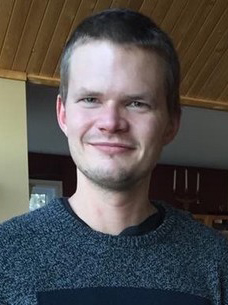
Colin John Flett Jr., 33, spent his whole life in Sudbury, where he played hockey and fished off the dock. In his final years, he struggled with depression and anxiety, which contributed to his substance use.
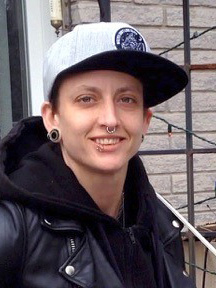
A poet, goalkeeper and rodent enthusiast, Sara (Townes) Jacobs, 30, celebrated his differences with original songs he would write and play on his ukulele, banjolele or guitar. One of a kind. Struggles with mental illness and gender identity gave birth to battles with addictions.
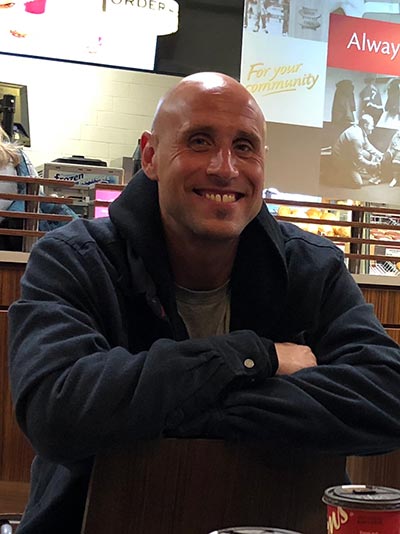
Christopher Wolfgang Kraus, 38, used drugs to cope with the depression that developed after experiencing a series of traumatic events as a teenager. “He took them for a reason: to feel better, to feel calm, to clear his head and to get away from the world,” said his sister, Andréa Kraus. “I think that says more about the world than it says about my brother. I think sometimes people just see an addict. They stop seeing a person – a person trying to cope, to belong, to feel better.” Christopher’s family will remember him for doing things his own way, at his own pace. His friends will remember Christopher – a six-foot-four guy who loved to have a good time – as the “smiling giant.”
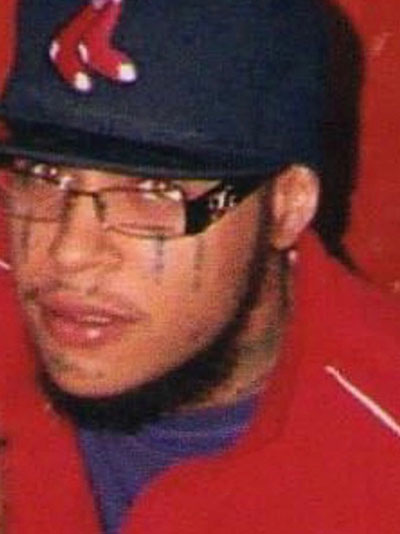
Seth MacLean, 31, grew up a quiet, kind kid who liked art and hip-hop. He developed schizophrenia in his teens and spent years on the streets of Toronto, bouncing between shelters and jail. Authorities failed to notify his family when he died of an overdose on July 12 and he was buried before they even knew he was gone.
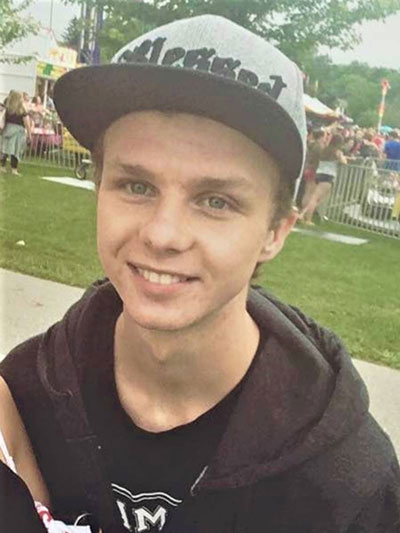
A kind soul, Michael Monahan, 21, suffered from mental-health issues, but overcame his struggles to reach second in his high-school graduating class. He liked camping, backpacking, skateboarding and, above all, the trampoline, where he spent most of his free time. He was applying to join the Armed Forces when he died from a fentanyl overdose.

Ryan Nayler, 34, was an Irish-whistle player, ethical vegan and advocate for animal rights who once used his savings to fly across the country to protest a cull of rabbits that had overrun the University of Victoria campus. He struggled with bipolar disorder in his last years, but “remained a hopeless romantic, searching for his soulmate to build a life and family with,” his death notice said.
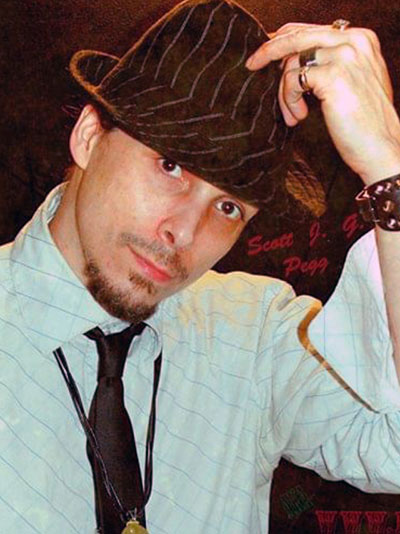
Scott Pegg, 42, was a talented nature photographer. He lived with severe depression and anxiety, but would often put aside his own troubles to help others, inviting those who were down on their luck into his home. His family had never known him to be an avid user of “harder” drugs, and was heartbroken when he died of a fentanyl overdose last July. "We as a family have a ton of questions," said his mother, Brenda. “Did someone overdose him? Did he do it himself? Why wasn't Narcan used? It's a whole bunch of questions that are never going to get answered.”
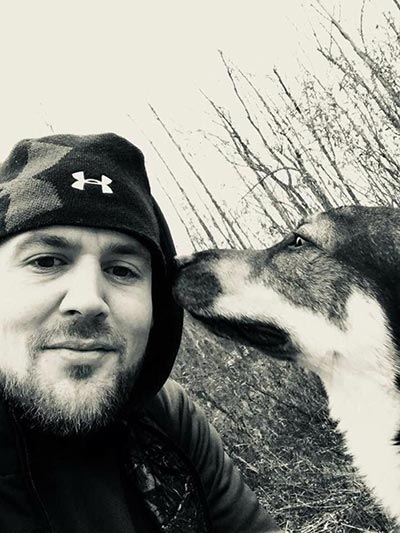
Big-hearted and quick to laugh, Adam Robinson, 35, loved hockey so much that, as a kid, he used to come home from the rink to eat supper in his skates then go straight back to playing. The sudden death of his mother when he was 16 triggered a long struggle with addiction and mental health. His body was found in a homeless camp in a Toronto ravine.

Alexis Stewart’s, 20, creativity shone through in her writing and poetry, and she dreamt of applying it to a career in interior design. She struggled with mental-health issues, though, including ADHD, anxiety and depression, and developed a substance-use disorder when self-medicating. Alexis had the full support of her family, and together they waited patiently for an open spot at a rehab facility that did not come in time.
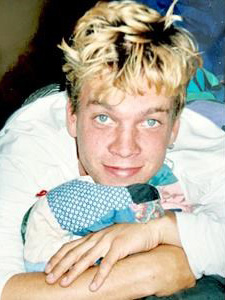
Samuel Stuart, 44, suffered from schizoaffective disorder and turned to drugs to calm the turmoil in his mind. His mother warned him about the bad drugs going around, “but he was caught in the trap of need and want.” His last phone message to her ended: “Maybe I’ll drop over. Take care. Love you, Mom.”
The peril of a contaminated supply

Joseph Bauman, 45, always wanted to help others. As a child, that compelled him to take a first-aid course. As an adult, with first-hand experience living rough on the streets of Maple Ridge, B.C., it led him to advocate for more affordable housing and drug policy reform. Joseph died in late October, 2020, from using methamphetamine that had been contaminated with fentanyl.
While fentanyl is most commonly found in illicit opioids such as heroin and oxycodone, it has been detected in stimulants as well. This type of contamination is particularly dangerous for drug users who do not usually use opioids, as they have not developed a tolerance for them.
Data from drug-checking services in the Vancouver area in 2020 found that fentanyl was detected in 3 per cent of samples expected to be stimulants. Of those fentanyl-positive stimulant samples, 17 (53 per cent) were methamphetamine and eight (25 per cent) were cocaine.
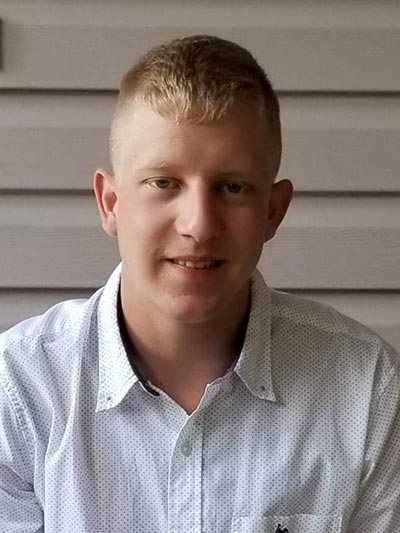
Jordan Hansen, 26, was a second-year apprentice in the sheet-metal industry who enjoyed hockey, soccer, lacrosse and just about anything outdoors. He had the biggest heart and was always willing to help anyone who needed it. His family takes comfort in knowing that his heart has been donated to someone in need. Jordan died from using cocaine contaminated with fentanyl.

A husky six-foot-five construction worker with striking blue eyes, Scott Seibel, 33, was a gentle giant who liked shooting pool, playing darts and listening to the music of Creedence Clearwater Revival. His family says he died after using cocaine that was tainted with fentanyl during a night out drinking. A friend painted a mural of Scott on a wall in his hometown of Red Deer, Alta., to remember him by.
Watch: Scott’s father speaks with The Globe about his son’s death

Ryan Andrew Sidun, 28, was an accomplished hockey player, having played in both Canada and the United States. He graduated from Liberty University with a bachelor of science in aviation, and his goals were to fly for an airline and to one day have a family of his own. Ryan died from using cocaine that, unbeknownst to him, was laced with fentanyl. He has family and friends that love him, and are now left to live life without him.
Inadequate access to timely treatment
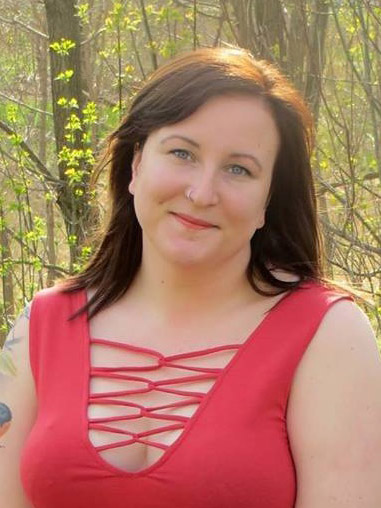
Sophie Breen, 27, did not accept injustice. From a very young age, she cared deeply about people’s suffering; as a teen and young woman, through her own intense suffering from trauma and mental illness, she became a force for change. She pursued a degree in social work and volunteered as a peer-support counsellor while working through her own debilitating depression, anxiety and pain. She tried Western and Eastern medicine, and every treatment her doctors could offer, determined to get well. One night, in desperation, she tried fentanyl. And just like that, she was gone, leaving a gaping hole in the lives of her mother, sister, niece, fiancé and friends. They don't blame her. They just miss her, profoundly.
She was far from the only one to struggle with finding a treatment that would work. Private treatment programs can cost tens of thousands of dollars over time. Some insist that clients go to a detox program first and detox beds can be scarce in some communities, if they exist at all. Others turn people away if their needs are too complex or eject them if they break a rule by doing something like sneaking in a cell phone. The pandemic has meant even more rules, discouraging some drug users from trying to get into a program in the first place.

Myles Keaney, 22, was so good at every sport he played that friends called him “King Keaney.” He was diagnosed with schizophrenia at 18 and self-medicated with stimulants in part because they helped quiet the voices that tormented him, and in part because they gave him energy when his anti-psychotic medications dulled him. He had sought help in early 2020, but was turned away from a rehabilitation facility because his needs were too complex, mother Denise Sandul said.

Christopher Martin, 40, worked as a millwright at the diamond mines in the Northwest Territories, where he was also part of the mine rescue team. He had struggled with addiction for more than two decades, but in recent years sought help in an effort to care for his mother, who was terminally ill with cancer. Because there is no addiction treatment in the NWT, he was put on a long waiting list before he was eventually sent to a facility in Calgary. He had achieved six months of sobriety while there, a period during which his family believes he was at his happiest, and gave his mother comfort. Christopher relapsed on the eve of being readmitted to detox and died in February.

Michael Anthony McCartan, 27, was a health buff who would spend hours hitting the punching bag or running on the treadmill in his family's home gym. After his brother Johnny died from an overdose in 2015, Michael began struggling with substance use as well, said their mother, Margaret Swan. “I think he seemed not to know what else to do,” she said. “He talked about Johnny a lot, and would literally hold his chest and tell me how much it hurt to miss his brother.” She bought him self-help books and journals, encouraged him to go to counselling and borrowed tens of thousands of dollars to put him into a treatment facility that she says did him little good. Michael died while he was on a wait list for another facility.
Increased risk of overdose after incarceration
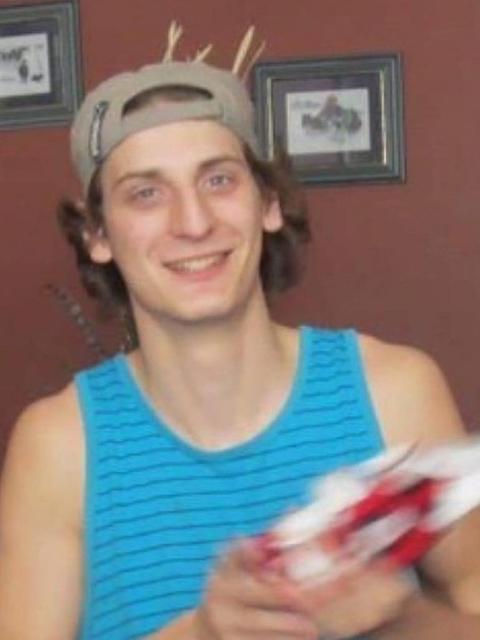
Scotty Mitchell, 26, was a free-spirited and active young man who enjoyed working out, riding his bike, paintballing, bowling and playing football with his older brothers on the Brantford Bisons team. His best friend, a rescue dog named Tessa, always got to ride shotgun in his car, forcing human passengers to take the backseat.
Scotty lived with mental-health and addiction issues and recently spent three years behind bars, during which time he did not receive help for either, according to his mother. He overdosed twice in March, 2020, while out on parole, and fatally in July, five weeks after his release.
Jennifer Metcalfe, executive director of Prisoners’ Legal Services, said prisoners have a right to essential health care under Section 86 of Canada’s Corrections and Conditional Release Act – in theory. However, wait lists for access to opioid agonist therapies such as methadone and Suboxone are long in many federal prisons, and access to psychosocial supports for opioid use disorder are limited.
As well, little is done to connect prisoners with community-based supports upon release, despite evidence of increased overdose risk, Ms. Metcalfe said.
A review of Ontario drug deaths between 2006 and 2013 found that one in 10 occurred among people who were released from incarceration within the previous year. A separate study found that, in the two weeks after release, a person’s risk of overdose is 56 times that of the general population, in part because of decreased opioid tolerance.
“Scott’s death has left such a hole in our heart and soul,” his mother, Kathy Mitchell, said. “I blame the prison system for not getting my son the help he needed.”
Increased impacts on Indigenous people
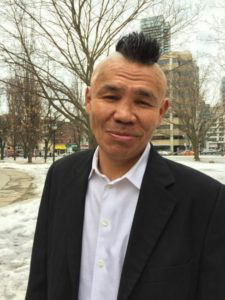
Chris Vanhartskamp, 45, was a gentle soul who shared his struggles openly, especially to the Sanctuary church and community in Toronto that had become like family. Chris and four of his siblings died separately while living on the streets of Ontario, according to the Toronto Star. As children, they were all taken from their Indigenous parents by child-welfare authorities during the Sixties Scoop.
Canada’s overdose crisis disproportionately affects Indigenous people for reasons that include racism, colonialism and intergenerational trauma. B.C.’s First Nations Health Authority found that, between January and May, 2020, 16 per cent of overdose deaths in that province were Indigenous people, though they represent only 3.3 per cent of the population. Indigenous people died at 5.6 times the rate of other B.C. residents.

Nick Crazy Bull, 19, was a musician and gamer who aspired to be a YouTube streamer and rapper. He was a little brother to everyone he knew. Despite living without a home from a young age, he never lost his innocence; everyone who met him would say, “Wow, he's just a kid.” Nick suffered badly from poor health and couldn't understand why the programs that helped him in his youth could not be there for him as he transitioned into adulthood. He had a deep respect for his Blackfoot roots. He was mentored by Tico Iron Shirt in the ways of Kanatsomita, a warrior society in Kainai, and it was these teachings that helped ground him on difficult days. The sister of his “Grandma Faye” gave him the Blackfoot name Piitasahkomapi (Eagle Boy) to honour his physical and spiritual being.
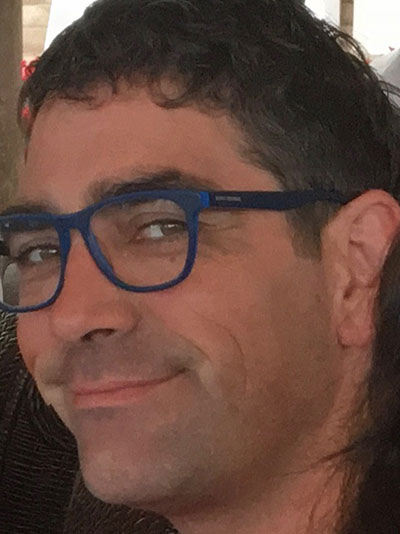
After spending last Christmas in Puerto Vallarta, Mexico, with his mother, Jean-Guy Hogya, 44, posted a photo of them together on Facebook, captioning it: “The greatest woman ever.” His last text to family was on Jan. 5; he was found alone in his room the next day, dead from a fentanyl overdose. Jean-Guy had been abstinent for five years up to that point, thanks to a treatment program in Powell River, B.C.
He was fun, dynamic and creative in every way, through music, pottery and painting. He was of Métis heritage and had recently been given his status. His family had been able to celebrate his life with the blessings of Bruce Dumont, a Métis elder, right before COVID-19 restrictions. Two hundred people gathered, including childhood friends, family from far away, his boss, former teachers and birth family. As one friend said: “He was like a meteor streaking across the sky.”

Jennifer Lee Anne Watts, 39, was a hard-working and independent Indigenous woman who worked two to three jobs at a time to sustain herself. She took upgrading classes at North Island College on Vancouver Island for several years and was proud to obtain her Dogwood Diploma in 2018. She had written in her journal that she planned to quit drugs and save enough money to fix up her home. She had aspirations of becoming a bookkeeper and yearned for a better life. Because of COVID-19 restrictions, Jennifer's family couldn't hold a proper funeral, or feast as First Nations do, said her father, Dave Watts. "Perhaps better services for addictions could be provided on reserve," Mr. Watts said.
No community untouched

Renee Bedard, 29, loved nature and animals and rode horses throughout her life. She had natural athletic talent and was a gifted artist, drawing and painting horses, people and graffiti art.
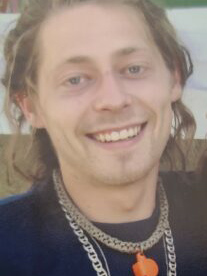
Casey Dean Bigg, 37, was a proud mama’s boy who carried a picture of his mother in his wallet. He loved visiting B.C. hot springs, planting things in his garden and going on “hippie adventures” with his friends.
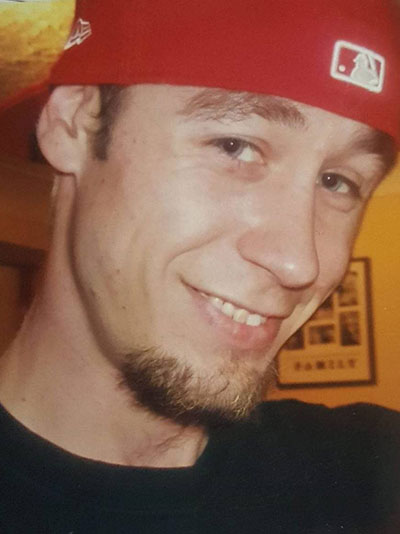
Richie Britton, 35, was known to his friends for his devotion to his “fur baby” Rocco. He took the big dog everywhere. A tawny boxer, he loved riding shotgun in Richie’s car. In winter, Richie would roll in the snow with Rocco and throw snowballs for him to chase.
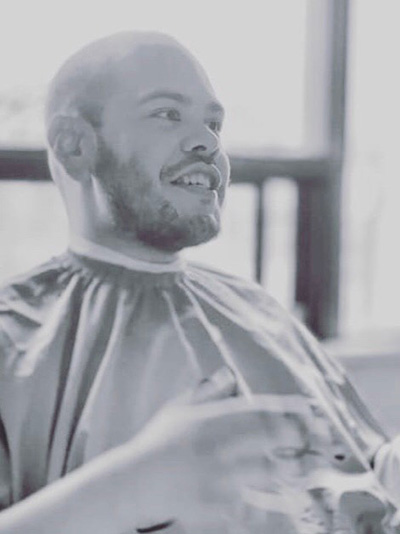
Outgoing and generous, Jonnathon Castillo, 27, loved designer clothes, good cologne, expensive whisky and his girlfriend, Dean. He would give his less fashion-conscious brother a look and ask: "What are you wearing?" He was devoted to his mother, an immigrant from Guatemala.

Justin Conroy, 32, spoke with his sisters and father on a daily basis. He was seemingly skilled at everything he did: drawing, training dogs, cooking. Justin loved his nieces and nephews to bits and would always make them laugh. He had just bought his first home and was renovating it himself, starting with a gym in the basement.
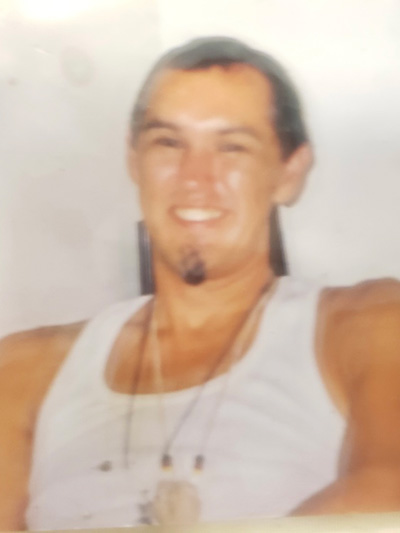
Michael Cook, 55, grew up in Vancouver's West End and worked for the Red Cross and as a counsellor for Indigenous youth. He loved 1970s music and often wore bell bottoms. He died from an opioid overdose, even though he had never been a habitual opioid user, said his former partner.
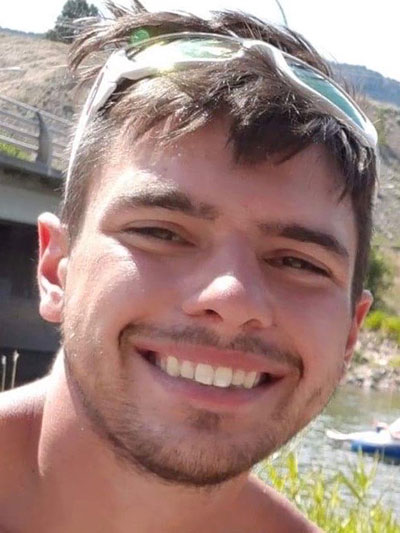
Benjamin Robert Cope, 25, was generous, caring and kind to everyone except himself. He worked as a carpenter, had above-average intelligence and natural athletic skills, but always doubted his self-worth. He struggled with addiction since his early teens. Ben's family wishes he could have seen himself through their eyes and known how wonderful he was.

Byron Cromarty, 29, died on the streets of Toronto early on New Year's Day as people celebrated around him.
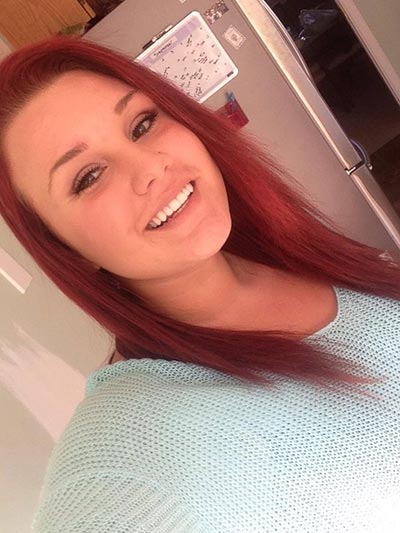
Olivia Diane Dalton, 21, was sweet by nature, with a caring heart. Bullied through every level of schooling, she gravitated toward others like her. In Grade 11, she accepted an offer to try heroin, finding it took away her self-esteem issues and emotional pain. She was soon hooked. Her parents spent more than $100,000 on her recovery, which worked for about a year and a half until she relapsed. Olivia had been given pure fentanyl by a dealer who did not care, says her father. She had been half a day away from moving out of her apartment and back in with her mother.
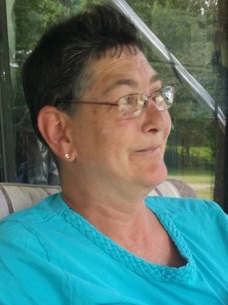
Lorraine Denise Dawley, 55, or Lori, as she was known to friends and family, was a loving daughter, sister, aunt and friend. Two men were charged with manslaughter after she fatally overdosed on fentanyl in her downtown Simcoe, Ont., apartment.
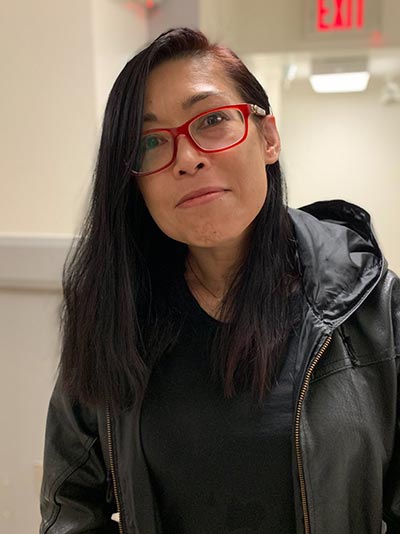
Sarah De Roo, 50, had gone to detox several times and often spoke to friends about recovery. They remember her as a happy person who always helped others when they were in need, but was not as good at caring for herself. Sarah had a complicated relationship with her parents. After her death, they told her friends that they loved her from afar and thanked those who loved her in person.

Myanna Dreaver, 40, was an artist, sculptor, writer and talented vocalist. She had empathy for those down on their luck, and would share what money, food, or cigarettes she had. She loved to organize family birthday parties, especially for her son. She would start planning months ahead, trying to create memorable experiences every time.
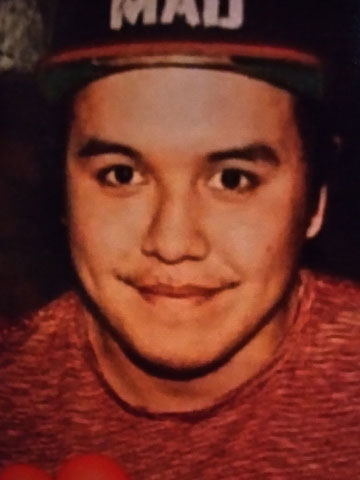
Sean Dudoward, 27, played basketball and daydreamed about becoming an MMA fighter, but the pursuit of both was derailed by his addiction. He once told his mother that his drug use helped him forget the traumas of his past, which included spending time in government care. Sean sought treatment after moving to Vancouver from Prince Rupert, but said he walked away after he was mistreated. He died one month before his 28th birthday, leaving behind two young children.
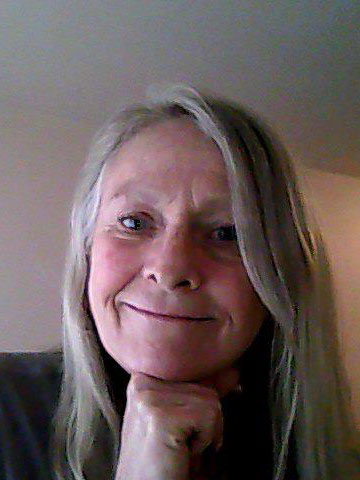
Patricia Ellertson, 69, or Patti, as she was known to friends, was a member of the drug-user advocacy group the Vancouver Area Network of Drug Users, working as a receptionist and serving as a board member. Friends remember her for her kindness and generosity. At Halloween, she would fill hundreds of little bags with candies, small trinkets and cash, handing them out to people in the city's Downtown Eastside. VANDU president Samona Marsh calls Patti her mother. When Samona’s bridesmaid bailed on her at the last minute, Patti swooped in, buying supplies for the wedding and assuming all bridesmaid duties. “I knew I could always tell her anything,” Ms. Marsh said. “She would never judge. She always took everybody for where they're at, you know?”
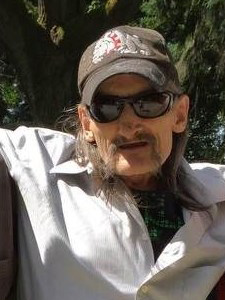
Bryan Ferenz, 60, was a former oil sands worker from Alberta whose friends would tease him for his head-to-toe denim and mullet hairstyle.
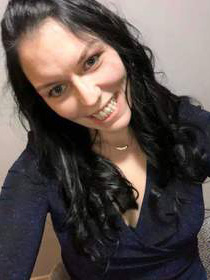
Sherry Fillion, 35, was a passionate hockey player during her youth who could always be found at the rink and waited expectantly for the first snow. She suffered years of grief after her first child, a girl, died at two months. Her family hung a miniature pair of skates around a white cross erected in her honour in Sudbury.
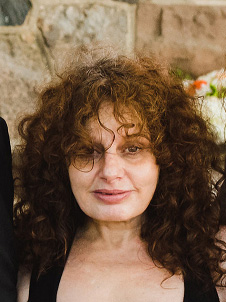
Candiemae (Candice) Kathleen Forstner, 53, could often be seen walking down the street with a string of neighbourhood cats following her, as they always knew the animal lover would give them a treat. But she reserved her greatest affection for her own cat, Baby Girl, whom she would sing to and fuss over endlessly. Candice lived with her friends Steve and Randa, and would often bring a smile to their faces by leaving them fresh cut flowers, their daily horoscopes cut out from the newspaper and coffee if she had the money. She lived intuitively by the teachings of Jesus, never passing judgment and always quick to forgive.

Michael Gallo, 24, loved to skateboard, camp, fish, write music and play the guitar and drums. He fought a long and hard battle with addiction, driven by a strong belief in second chances and new beginnings. Michael had rededicated his life to God and was trying hard to stay sober. His family believes that God took him home so he no longer had to struggle on Earth.

Morgan Goodridge, 26, played lacrosse and soccer, ran cross-country and was on the swim team. He made friends quickly. Morgan used drugs recreationally and chose recovery as soon as he realized his use had become problematic; he relapsed several times over 21 months, but continued to choose recovery every time. Earlier in the year, Morgan was the best his family had seen him, having just bought his first car and a new camera to practise photography. He died one month after his 26th birthday.
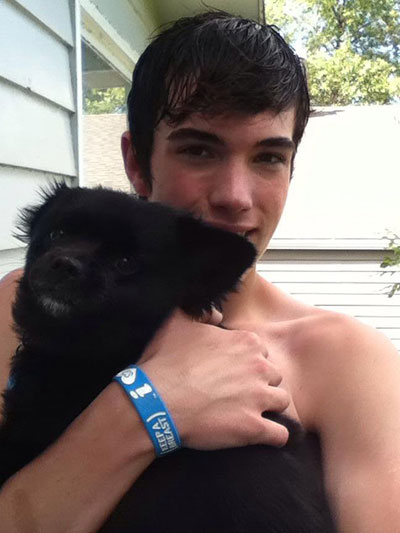
Anthony Jon Harper, 22, or A.J., as he was known to friends and family, loved art and singing. His best friend, Destiny, says he could make anyone in the room feel good about themselves; his laugh and megawatt smile always made her happy.

Shayne Heninger, 31, had a bold personality and a matching sense of style. Despite having little to his name, he always had the most impeccable outfits. He'd call himself a ladies’ man, but was committed to his wife and kids, the latter of whom he often bragged about for being polite and fast learners. He had wanted to sober up so he could be more hands-on with them. Shanye's friends would rib him for having the loudest voice ever: "There were many days that I scolded Shayne, [usually] in a joking manner," said Allison Dunne. "He was just so obnoxious and loved the attention he got when he was loud and inappropriate! What I wouldn't do to hear his voice again."
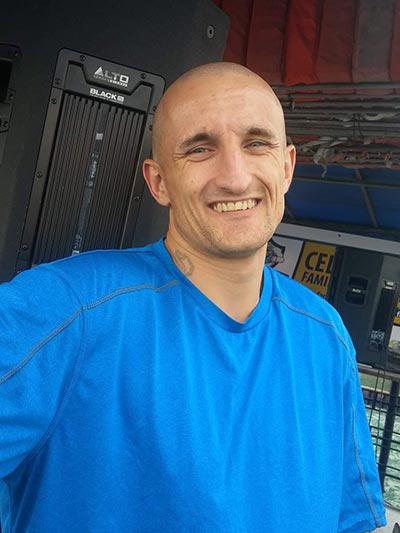
His family likened Jesse Michael Hill, 30, to a young Robin Williams for his ability to make them laugh until they couldn't breathe, and to Michael Jackson and Bruno Mars for his amazing dance moves. He is remembered for his sensitive heart and his love of family; he was very protective of his mom and sisters, and the family is devastated to lose him so young. Jesse's mother said he started doing drugs to both numb the pain of rejection and to self-medicate for his ADHD. He tried often to get help, but help was too hard to find.

Jesse Irvine, 25, loved making people laugh. His mother would often compare him to Will Smith for his energy and silliness, and ability to cure people of their sadness. His sister recalls him making up elaborate stories and causing chaos in efforts to make her smile. When his great aunt passed away when he was 3, he made everyone feel better by saying: “She's not gone, she's in my heart now. But she's kind of heavy.” Jesse was the only one who could successfully teach his younger brother how to tie his shoelaces and ride a bike.
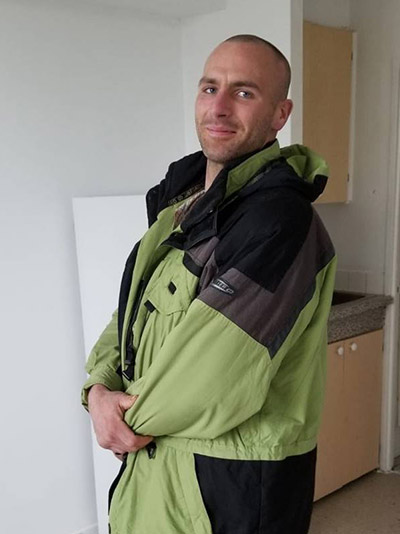
Brandon Kelly, 31, was a regular in Toronto’s Kensington Market. Known for his sunny smile, he loved chicken wings, chocolate and fixing bikes. His body was found under a blanket on the street.
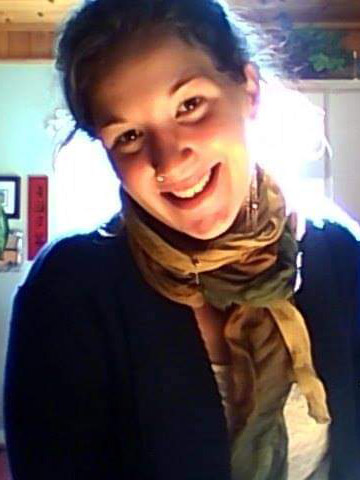
Simone Kemp, 27, had soft curls, big, beautiful eyes and a smile that lit up her entire being. She was a girly girl, but could be just as rough-and-tumble, and was comfortable caring for the animals on Prince Edward Island. She was firey, strong-willed and headstrong; she was a fiercely protective sister to her siblings, and loved her children and family. Simone also loved to draw and was a talented artist.
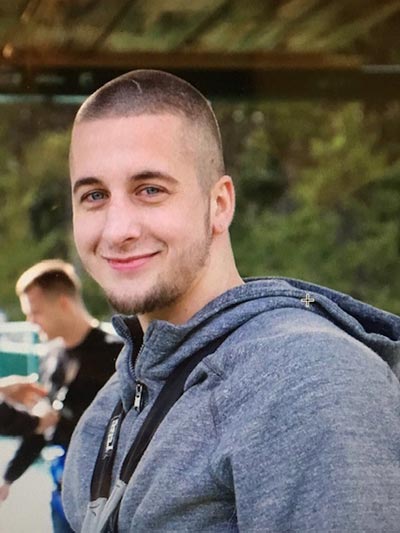
An honour-roll student, welder and father to a beautiful girl, Aaron Knorr, 28, loved the adrenalin of skydiving, bungee jumping and riding motorcycles. In 2019, he began working as a wildfire firefighter, which saw him repel out of helicopters and dig trenches in the thick of it all. He found the work exhilarating, and said it gave him a whole new appreciation for life.
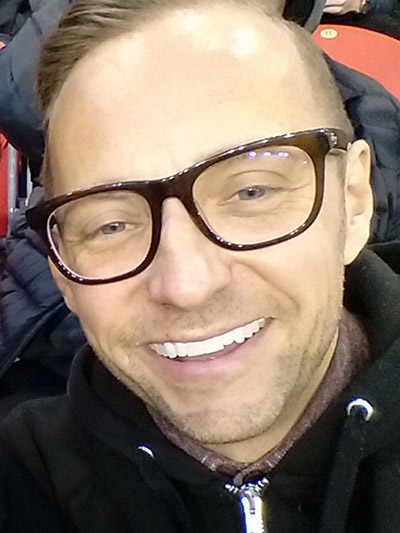
Steven Koehler, 48, wanted to live. He was reaching out and making connections to secure a healthy future. He was kind, generous and thoughtful. He loved the TTC, streetcars, subways and trains. He loved Star Trek and Star Wars, though he preferred the former. Steve enjoyed techno and postpunk and, if music was on, he was two-stepping. His charm and charisma drew people to him; his smile and sense of humour kept them there. He dressed impeccably, his hair was always perfectly coiffed and he had the whitest and brightest smile.
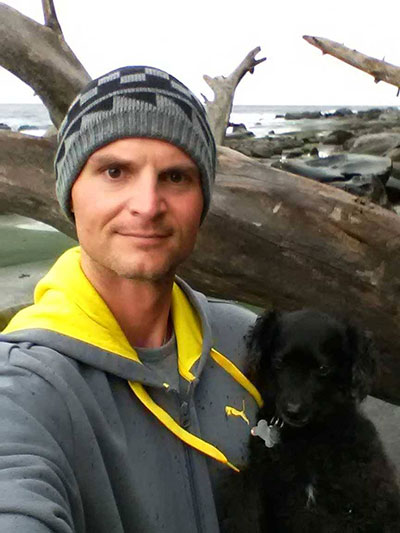
Ryan Krell, 46, was an adventurer who loved to sail, scuba dive, ski and kite-board and cared about human rights from an early age, becoming a union organizer at 19. He loved Volkswagens and had recreated Herbie the Love Bug, which made the local paper.

Bradley Lawrence Lloyd, 37, was a keen hunter and fisherman who was devoted to his daughters. “The two most important people in my life. I love them to the moon and back!” he wrote in a Facebook post a few days before his death.

Marco Dominique Lobmaier, 28, discovered his love of cooking from his dad and prepared all the family meals alongside his mom. He studied at Northwest Culinary Academy of Vancouver and went on to work in some of the most popular restaurants in the city, including Goldfish, Joe Fortes and The Flying Pig.

Kelly Mitchell Hanson Kreschuk Loeppky, 41, was a talented artist whose sketches would often become his next tattoo. He loved outdoor sports, working on cars, the thrash-metal band Slayer and his three daughters, who were his world.

Michael John Lukanchoff, 53, had an unparalleled passion for adventure, an encyclopedic knowledge of fish and wildlife and enjoyed nothing more than spending time with his friends. He loved being at sea, caring for his beloved pet birds, skydiving, fishing and music. But he will best be remembered for his wicked sense of humour, his generosity, his big booming voice and a laugh that could fill up any room. He had a big presence, matched only by his big heart. He was a good friend to so many and he will be forever missed.
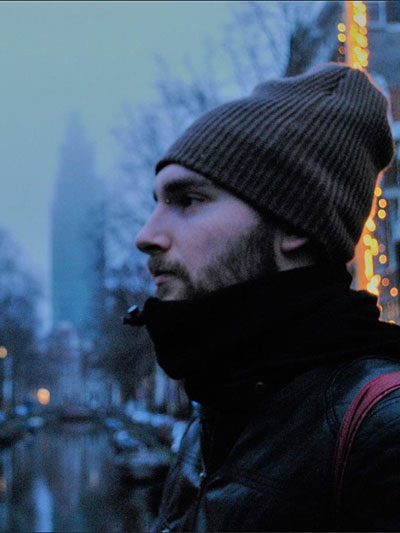
Julian Joel Marshall, 27, was thoughtful, intelligent and curious and had a love of nature, particularly fishing, enjoying nothing more than a quiet, late afternoon on the lake casting out a line.
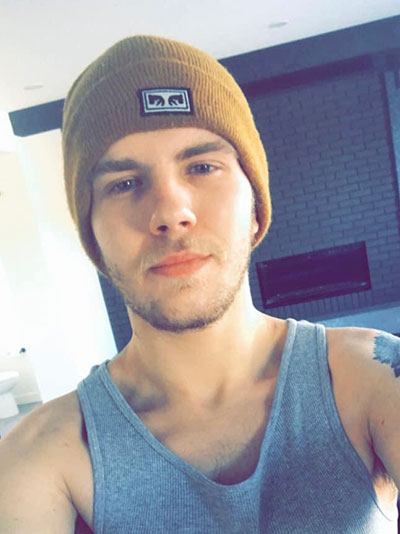
Quinn Mason, 22, was quirky, with a quick-witted sense of humour. He loved music of all kinds and was always playing his mother, Wendy, his new favourite songs. He was an amazing friend, often befriending the underdogs and making them feel included and valued.

Bradley Brian McClinchey, 45, was a gentle guy with a contagious smile and a chihuahua named Pistol. Sensitive and kind, he seemed to love everyone but himself. His parents would often say to him: "Son, [our] only wish is that someday you are able to look in the mirror and see the man that we all see." That wish never came true.

Powered by music, Michael McGhie, 43, DJ’d, played the guitar and was once the lead singer of a band called Sloppy Chicken. When his family threw a block party at their complex in Toronto, he DJ’d in a hazmat suit. But despite his boisterous exterior, Mike struggled with depression. He hated his drug use, which started at 15, and had tried to quit, completing a rehab program in Toronto. His sister, Tania, remembers him for his kindness, sensitivity and generosity; when their mother in Newfoundland was diagnosed with cancer, he flew out there and stayed with her for a month as she went through chemotherapy. "I just want people to remember him for who he was, and not what he did," she said. "A lot of people shunned him because of his addiction. That wasn't him. He was a human, and he deserved respect."

Jasmine McIntyre, 18, used heroin to numb the pain of past traumas, including the sudden death of her brother in 2016, but had been hopeful about her recovery. She had advocated for schools to better educate youth on the root causes of addiction.
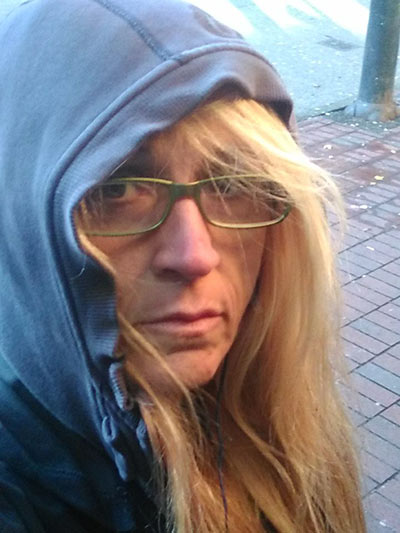
Marlynne Deanne Metzner, 63, had few close friends, but talked to everybody. She wanted to get into advocacy work for people who use drugs. The most important thing in her life was her bullmastiff, Prince, but her dad was a close second.
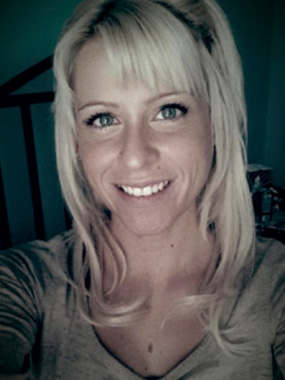
Athletic and spiritual, Mallory Nora Morton-Rhéaume, 29, studied and received her qualifications to become a yoga teacher while in the Bahamas. She adored arts and crafts and spent many happy hours creating scrapbooks, collages, beaded jewelry and posters to adorn her room. After her death, Mallory's family published an honest obituary about Ontario's public-health emergency of opioid-related deaths, urging readers to write to their members of Parliament to take action.
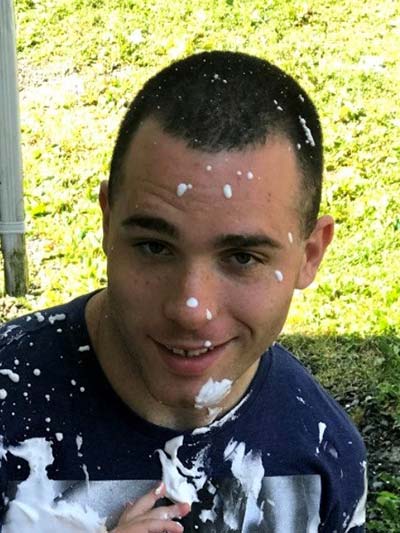
A forklift operator for Maritime Paper in Dartmouth, Tyson Murphy, 25, married in 2017 and was father to a little boy, who was the love of his life.

Michael John Francis Ovis, 32, loved his family’s three Dobermans – Major Pain, Stevie Beaver and Dany Dandelion – with everything in him. He was always smiling, and never ended any conversation with family without saying, “I love you.”
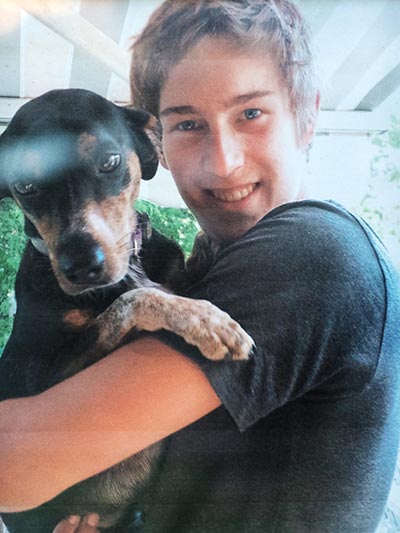
Nicholas Owens, 25, loved numbers and would stand around the kitchen talking passionately about statistics with his mom. He was getting ready to start studies toward becoming a chartered accountant when he died.

Nick Page, 57, was a volunteer at his church and a tireless community advocate. He was a part of a team in Langley, B.C., that sought to provide overdose awareness and dismantle the stigma of substance use. He helped launch a program to collect discarded needles, worked with a local volunteer group to give back to the community and helped successfully lobby for low-income housing in the neighbourhood.
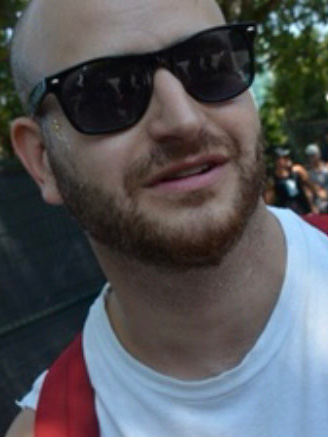
Ryan Pezim, 40, loved living in Vancouver's West End, was an avid cyclist and a top mechanic for a popular car company.

Thomas Michael Poulsen, 26, was an athletic young man who particularly enjoyed hockey, playing for both the Victoria Ice Hawks and Sooke Thunderbirds. He also struggled with an addiction to crystal methamphetamine for several years. Toward the end of his life, Thomas was living in a homeless encampment in Victoria. When his drug of choice was unavailable, he sought out an illicit opioid. When Thomas went missing, his family scoured the city, posting missing person posters. He was found in a tent 12 days after he died. His mother, Maureen Vincent, was among the last to see him alive. "The guilt of this is unbearable," she said. "It's still so hard to believe, although not surprising. He was loved by so many and had a family that would have done anything to help him. … Our baby boy, so loved and so sorely missed."

An old soul who loved jazz and Frank Sinatra, Curtis Ranger, 24, felt he didn’t belong in this era. He disliked how people had become more self-absorbed and selfish, and longed for a time when they helped each other and a handshake meant one’s word. He was a compassionate boy who grew into a tormented man, and his parents’ only regret was that they could not take his pain or loneliness away.
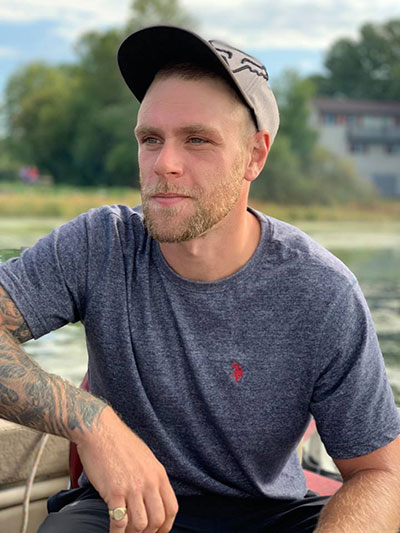
Shawn Richards, 33, was a roofer by trade. He had fought a long battle with addiction and had just finished three months of rehabilitation a month before his death. He surrounded himself with positive people, spent lots of time at the gym and was active in recovery meetings. And then the COVID-19 pandemic hit. With nothing to keep himself busy and the loss of all his supports, Shawn relapsed and lost his battle to the tainted drug supply, said his mother, Johanne Logue.
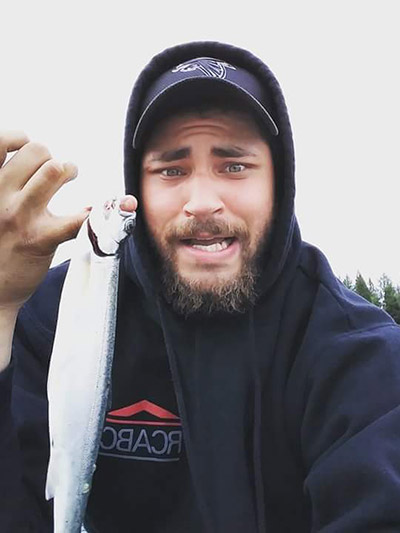
Hayden Robson, 28, was a proud uncle and fierce protector of family who brought humour into every situation. A New Year’s baby, Hayden was the first person born in Kingston in 1993 – a distinction that was commemorated with a photo with his mother in the local newspaper.
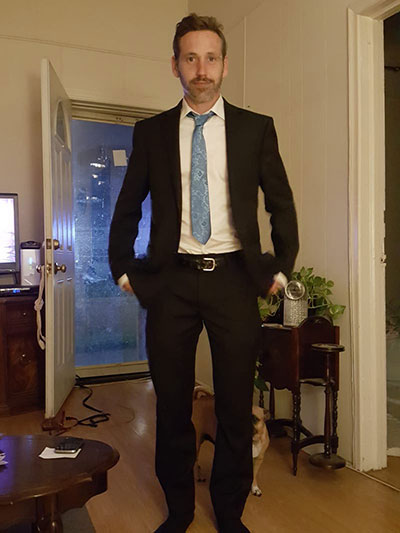
Michael Saddler, 41, was so into video games that he named his boys Halo and Drakon. The three would spend hours gaming together on the couch. Just before he died he made plans with his sister to take their kids to a giant arcade. He died in a dirt basement, three years after his brother Harold died of an overdose.

Tiffany Abigale Shawanda, 32, liked fishing, camping, going to the casino, hanging out with her friends and, most of all, spending time with her two sons and family.
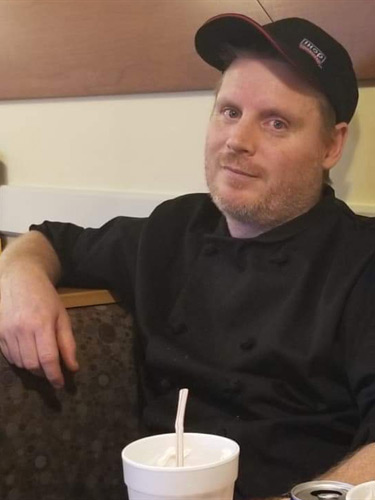
Kenneth John Sloggett, 41, was a twin brother, a fun-loving uncle and a great mentor who touched the life of everyone he met.

Every time he told a funny story, Bryan James Thomas Smith, 36, would punctuate it with, “That's pretty funny, eh?” That itself would make his family laugh. B.J. was loved by many, not only for his humour, but his empathy. If he was concerned that someone might go without eating, he would go out of his way to make them a meal. B.J.’s goal was to stop using drugs and go back to school to take a mental-health and addictions course.
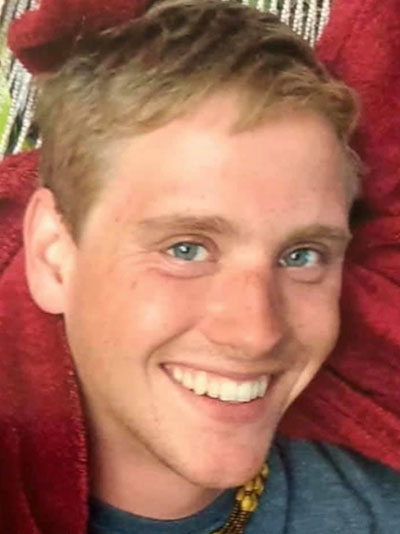
Passionate about environmental responsibility, Michael St. James, 27, graduated with an honours bachelor of environmental science and a master of science. He planned to pursue a career in environmental site assessment and remediation of mine sites, by developing modern solutions for complex problems. Mike's two prized possessions were his fishing rod and skis.

There is nothing that Mitchell Sveinbjornson, 29, did halfway. He played hard, worked hard and loved oh so very hard. As many of his siblings would tell you, Mitchell did not have gentle tactics when he felt you were screwing up. He always wanted his brothers and sisters to be better than him, to learn from his mistakes and take an easier path than he did.
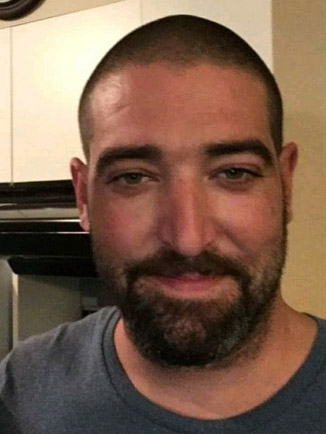
A Canada Post worker, Gilles Theriault, 41, was known as Gilles the Thrill at work because of his life-of-the-party personality. He loved poker, camping, fishing and his little dog, Moose. He died just days before he was to start addiction treatment.
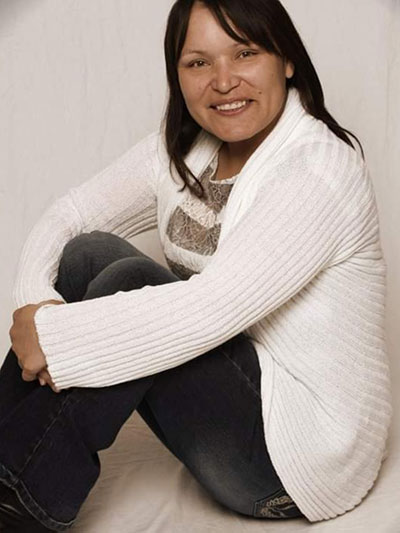
Rhonda Venn, 43, was a certified esthetician who did hair design, nail art and make-up, and had planned to launch her own business. She is loved by her large extended family.

A big, shy long-haul trucker nicknamed Bundy, after wrestler King Kong Bundy, Kevin Waring, 38, loved hockey, heavy metal and helping his friends. Heading back home in his truck, he would text his mother: "What’s for supper? I’m on my way.”
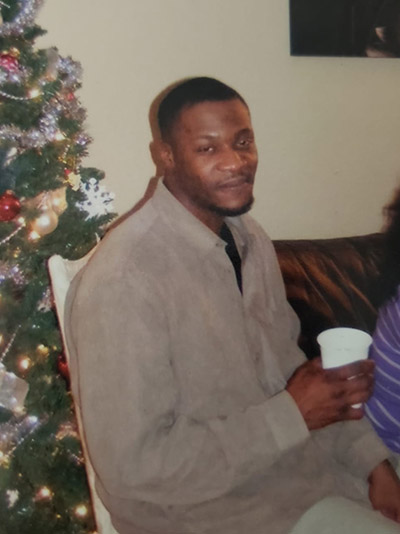
Anthony Watson, 42, was always cracking jokes and inviting laughter, even at inappropriate times like when the family was blessing a meal. He always wanted to keep things light. Anthony was passionate about helping other people; no matter how much need he himself was in, he was always volunteering and offering whatever help he could to others in his community. He often cooked for others in his building. His family knew that he was struggling with addiction, but was always optimistic about his recovery. "We love him so much," says his sister, Stephanie Hinds. "We will not let his memory fade."

Jackie Welles, 27, endured many difficulties in life as a child of the foster system, but was determined to be a good mother, which she was. Her family planned to make a blanket with photos of her on it so that her son and daughter will still be able to get hugs from Mom.

Ian Paul Wessel, 29, did a wicked dinosaur impression that could be described as part pterodactyl, part velociraptor. "Very loud, very prehistoric," recalled his sister, Ashley, with a laugh. Ian had been abstinent for one year before relapsing, possibly related to the stress of a new job, Ashley said. She is grateful for that time that they had.

Dixie White, 34, earned a certificate in addiction counselling and community work in hopes of helping others through their struggles. Her chihuahua had a wardrobe bigger than hers, and would carry her cigarettes in its mouth.

A beautiful boy whose eyes sparkled like the ocean, Logan Williams, 16, was discovered at just nine years old by a casting agent visiting from Los Angeles when he was at a Metro Vancouver mall with his mother. The kid with the fearless attitude would go on to become an accomplished actor, best known for his role as the young Barry Allen in The Flash. He loved his time on set; his favourite part was craft services.
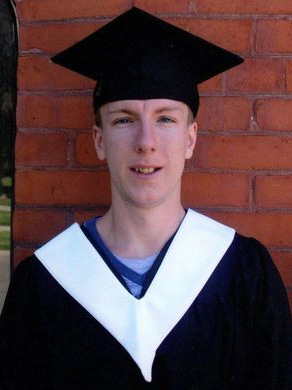
Grant York, 26, was one of four men who died in a single day in January in the Southwestern Ontario city of Brantford. He was a fun-loving practical joker who worked as head cook at a local burger joint. His mother found him propped up in his bed in her home with an unlit cigarette in his mouth. She thinks the drugs hit him so fast he didn’t have time to light it.

A funny and caring husband and father of four little girls, Glenn Young, 32, struggled with many things from an early age, but had just taken God back into his life, said his wife, Dana. He died eight days before his 33rd birthday.

Tyrone Henry Joseph Zammit, 38, had been driving to Toronto from Yarmouth, N.S., when he checked into a motel in Bedford. He was found dead two days later, his death prompting local police to issue a public advisory about a bright green batch of fentanyl in circulation. His daughter was born one month later, on what would have been his 39th birthday.
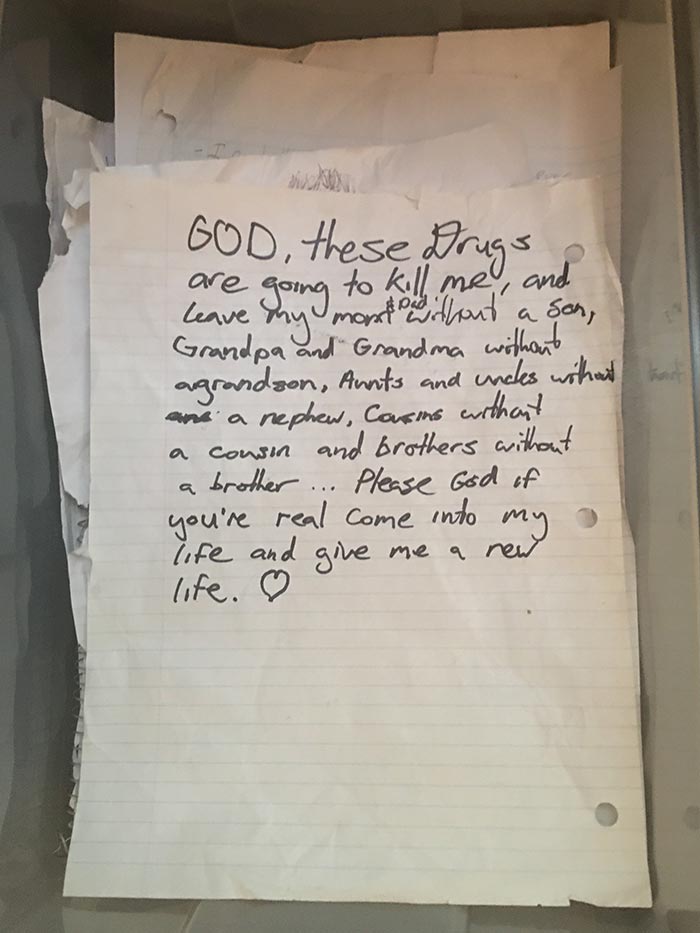

Credits
Additional reporting by STEPHANIE CHAMBERS, RICK CASH and CARRIE TAIT; Editing by NICOLE MACINTYRE and LISAN JUTRAS; Photo editing by SOLANA CAIN; Video editing by PATRICK DELL; Design and development by DANIELLE WEBB
Lead image: Bereaved family members pose with crosses during a memorial photoshoot organized by Moms Stop The Harm in Mission, B.C., in October 2020. MAGGIE MACPHERSON/THE GLOBE AND MAIL
Portrait images of overdose victims are courtesy of their families, public obituaries and media reports.
Our Morning Update and Evening Update newsletters are written by Globe editors, giving you a concise summary of the day’s most important headlines. Sign up today.
